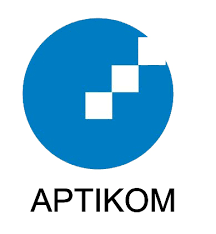Prediction of Student Decisions in Choosing the Type of Bank Using Support Vector Machine (SVM)
DOI:
https://doi.org/10.18196/eist.v3i1.16889Keywords:
Decision in Choosing Bank, Classification, Multiclass Label, Support Vector Machine (LibSVM)Abstract
A bank is an intermediate financial institution authorized to take deposits, lend money, and issue promissory notes or banknotes. In the present day, every adult must have at least one bank account. Additionally, bank services range from regular and hajj savings to large-scale loans. Students, one of the bank’s customers, usually utilize services confined to savings to preserve pocket money received from their parents and ordinary transactions like transfers and payments. Several factors, including the atmosphere, administrative fees, and the accessibility of ATMs and bank branch offices, impact students’ decisions about where to save money. It prevents the bank from predicting which services must be enhanced to encourage customers, particularly students, to select the bank. Therefore, prediction is required to ascertain the students’ choice of bank. This study employed data mining and the Support Vector Machine (LibSVM) algorithm. The quantity of data impacted the outcomes of the SVM classification. In addition, kernel types, k-fold values, and sampling techniques also influenced classification accuracy. LibSVM with a kernel type of RBF, a k-fold of 8, and shuffled sampling classified 200 data with an accuracy of 68.40%.
References
Umardani, D., & Muchlish, A. (2017). “Comparative Analysis of the Financial Performance of Islamic Banks and Conventional Banks in Indonesia” (In Indonesian). Jurnal Manajemen Dan Pemasaran Jasa, 9(1), 129.
He, B., Shi, Y., Wan, Q., & Zhao, X. (2014). “Prediction of customer attrition of commercial banks based on SVM model”. Procedia Computer Science, 31, 423–430.
Dewi, S. (2016). “Comparison of 5 Data Mining Classification Algorithm Methods on Predicting the Success of Banking Service Product Marketing” (In Indonesian). None, 13(1), 60–66.
Hairani, Setiawan, N. A., & Adji, T. B. (2016). “Data Mining Classification Method and SMOTE Sampling Technique Handle Class Imbalance for Customer Segmentation in the Banking Industry”. (In Indonesian). Seminar Nasional Sains Dan Teknologi, 168–172.
Muhamad, H., Prasojo, C. A., Sugianto, N. A., Surtiningsih, L., & Cholissodin, I. (2017). “Optimization of Naïve Bayes Classifier Using Particle Swarm Optimization on Iris Data” (In Indonesian). Jurnal Teknologi Informasi Dan Ilmu Komputer. https://doi.org/10.25126/jtiik.201743251
abidarin rosidi,heri sismoro,emha taufiq luthfi,hanif al fatta,hartatik,hastari utama. (2017). “Data Management and Information Technology”. (In Indonesian). Jurnal Ilmiah Dasi, 1411–3201.
Kuswanto, A. (2009). “The Effect of Service Quality on Customer Satisfaction Levels”. (In Indonesian). Jurnal Ilmiah Ekonomi Bisnis, 14(2), 5873.
Chang, C. C., & Lin, C. J. (2011). LIBSVM: A Library for Support Vector Machines. ACM Transactions on Intelligent Systems and Technology, 2(3), 1–39.
Wilarjo, S. B. (2014). “Definition, Role, and Development of Islamic Banks in Indonesia”. (In Indonesian). Igarss 2014, 2(1), 1–5.
Haryati, S., Sudarsono, A., & Suryana, E. (2015). “Implementation of Data Mining to Predict Student Study Period Using the C4.5 Algorithm (Case Study: Dehasen University Bengkulu)”. (In Indonesian). Jurnal Media Infotama, 11(2), 130–138.
Puspitasari, A. M., Ratnawati, D. E., & Widodo, A. W. (2018). “Classification of Dental and Oral Diseases Using the Support Vector Machine Method”. (In Indonesian). Jurnal Pengembangan Teknologi Informasi Dan Ilmu Komputer, 2(2), 802–810.



